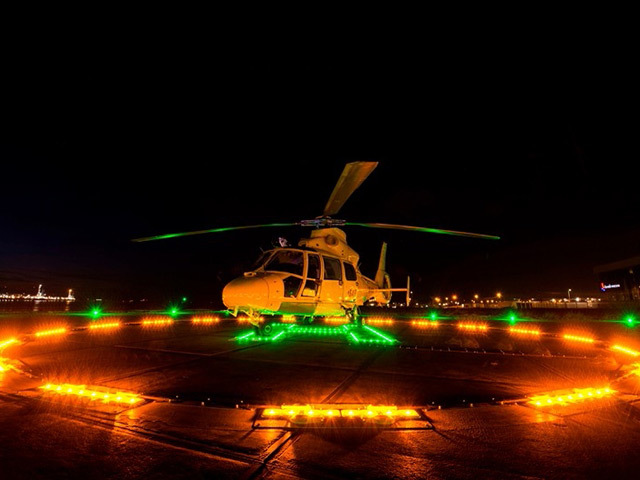
North Sea oil and gas firms are introducing new helideck lighting systems which will become mandatory for all offshore installations from March 2018.
The move follows recommendations in an Air Accidents investigation Branch (AAIB) report into a helicopter crash, when an aircraft ran into heavy fog in February 2009.
The AAIB’s findings from the non-fatal crash led to a 2013 revision of the Civil Aviation Authority (CAA)’s regulatory standards for offshore helicopter landing areas, which included the requirement for new lighting.
Orga Offshore, a Dutch firm specialising in navigational aids and helideck lighting, said yesterday its Circle-H system – developed in collaboration with the CAA and backed by trade body Oil and Gas UK – was now the industry standard.
The technology is designed to radically improve visibility for approaching pilots in all weather conditions.
It is being supplied and fitted to North Sea rigs by Aberdeen firm Wellhead Electrical Supplies, which represents Orga in the UK.
Prospector Offshore Drilling was the first company to use the new lighting system.
Circle H is already installed on its Prospector 1 jackup rig, which is currently moored in the Cromarty Firth as it is readied for operations for Total Explotation and Production UK in the central North Sea.
Orga product group manager, Daniel Powell, said: “We’re ready and able to undertake further installations of Circle-H on all platforms in the UK North Sea.”
The 2009 crash which led to the new technology involved a Bond EC225 Super Puma, which was carrying 18 people when it went down about 125 miles east of Aberdeen.
It was heading for the BP-operated Eastern Trough Area Project platform when the incident happened
A huge sea and air rescue operation saved the lives of the two pilots and all 16 passengers after they had clambered on to liferafts and waited for help to arrive.
Accident investigators found that information passed to the helicopter crew before they left Aberdeen showed the weather at the platform was “fine and dry” 90 minutes before the accident.
But witnesses said the installation was engulfed in a “fog bank” at the precise time of the crash.